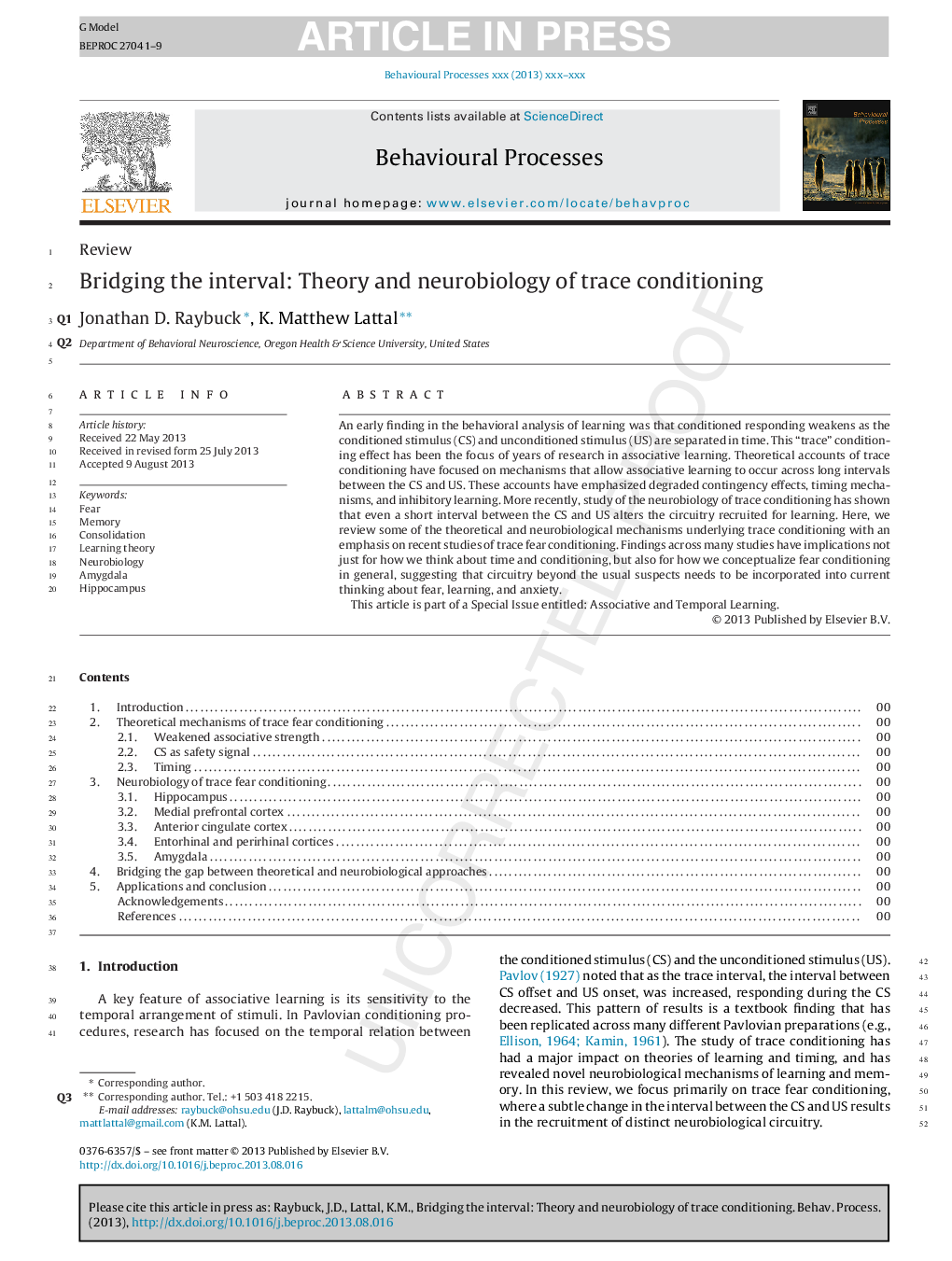| کد مقاله | کد نشریه | سال انتشار | مقاله انگلیسی | نسخه تمام متن |
|---|---|---|---|---|
| 8497384 | 1553178 | 2014 | 9 صفحه PDF | دانلود رایگان |
عنوان انگلیسی مقاله ISI
Bridging the interval: Theory and neurobiology of trace conditioning
ترجمه فارسی عنوان
فاصله زمانی: تئوری و نوروبیولوژی تهویه ردیابی
دانلود مقاله + سفارش ترجمه
دانلود مقاله ISI انگلیسی
رایگان برای ایرانیان
کلمات کلیدی
ترس حافظه، تثبیت، تئوری یادگیری، نوروبیولوژی، آمیگدالا، هیپوکامپ،
موضوعات مرتبط
علوم زیستی و بیوفناوری
علوم کشاورزی و بیولوژیک
علوم دامی و جانورشناسی
چکیده انگلیسی
An early finding in the behavioral analysis of learning was that conditioned responding weakens as the conditioned stimulus (CS) and unconditioned stimulus (US) are separated in time. This “trace” conditioning effect has been the focus of years of research in associative learning. Theoretical accounts of trace conditioning have focused on mechanisms that allow associative learning to occur across long intervals between the CS and US. These accounts have emphasized degraded contingency effects, timing mechanisms, and inhibitory learning. More recently, study of the neurobiology of trace conditioning has shown that even a short interval between the CS and US alters the circuitry recruited for learning. Here, we review some of the theoretical and neurobiological mechanisms underlying trace conditioning with an emphasis on recent studies of trace fear conditioning. Findings across many studies have implications not just for how we think about time and conditioning, but also for how we conceptualize fear conditioning in general, suggesting that circuitry beyond the usual suspects needs to be incorporated into current thinking about fear, learning, and anxiety.
ناشر
Database: Elsevier - ScienceDirect (ساینس دایرکت)
Journal: Behavioural Processes - Volume 101, January 2014, Pages 103-111
Journal: Behavioural Processes - Volume 101, January 2014, Pages 103-111
نویسندگان
Jonathan D. Raybuck, K. Matthew Lattal,
